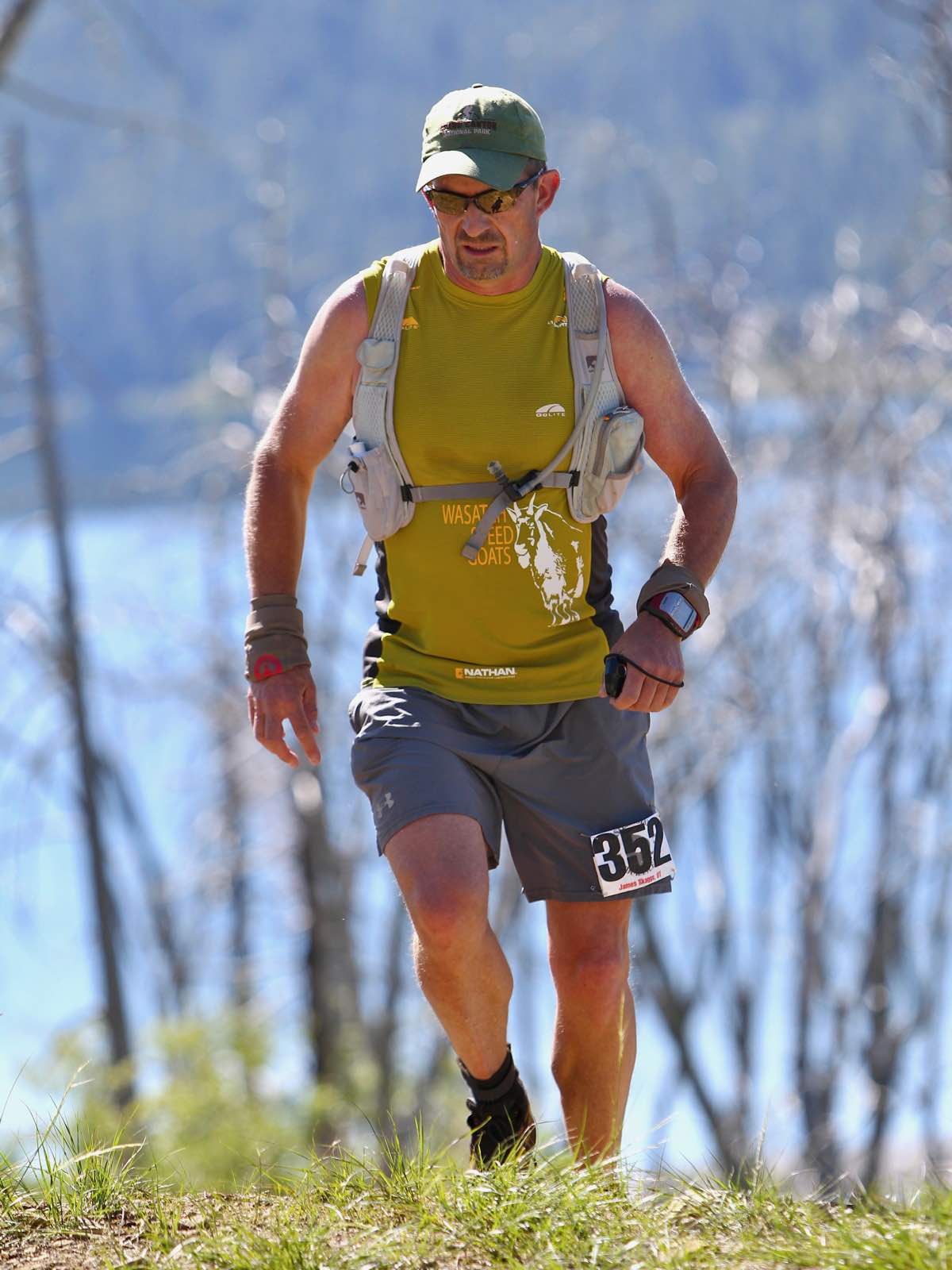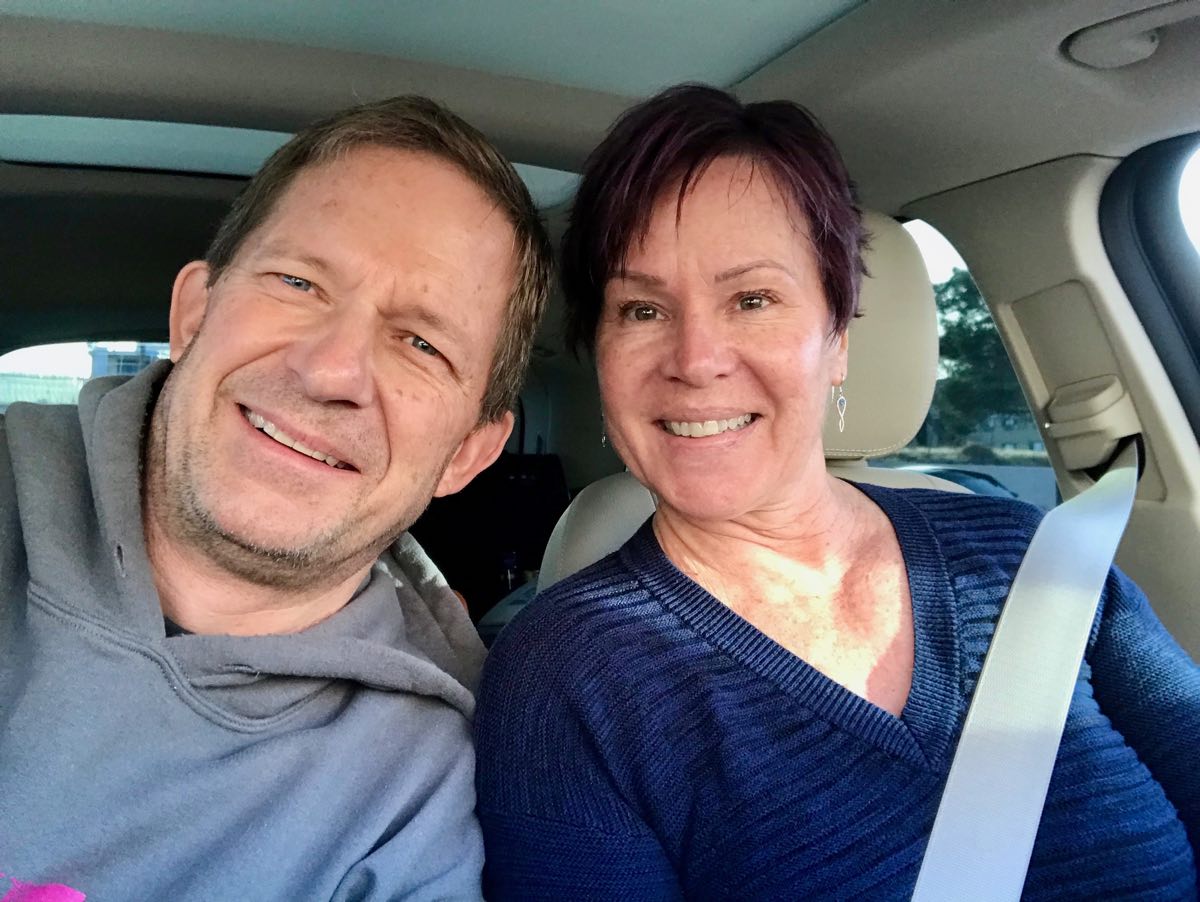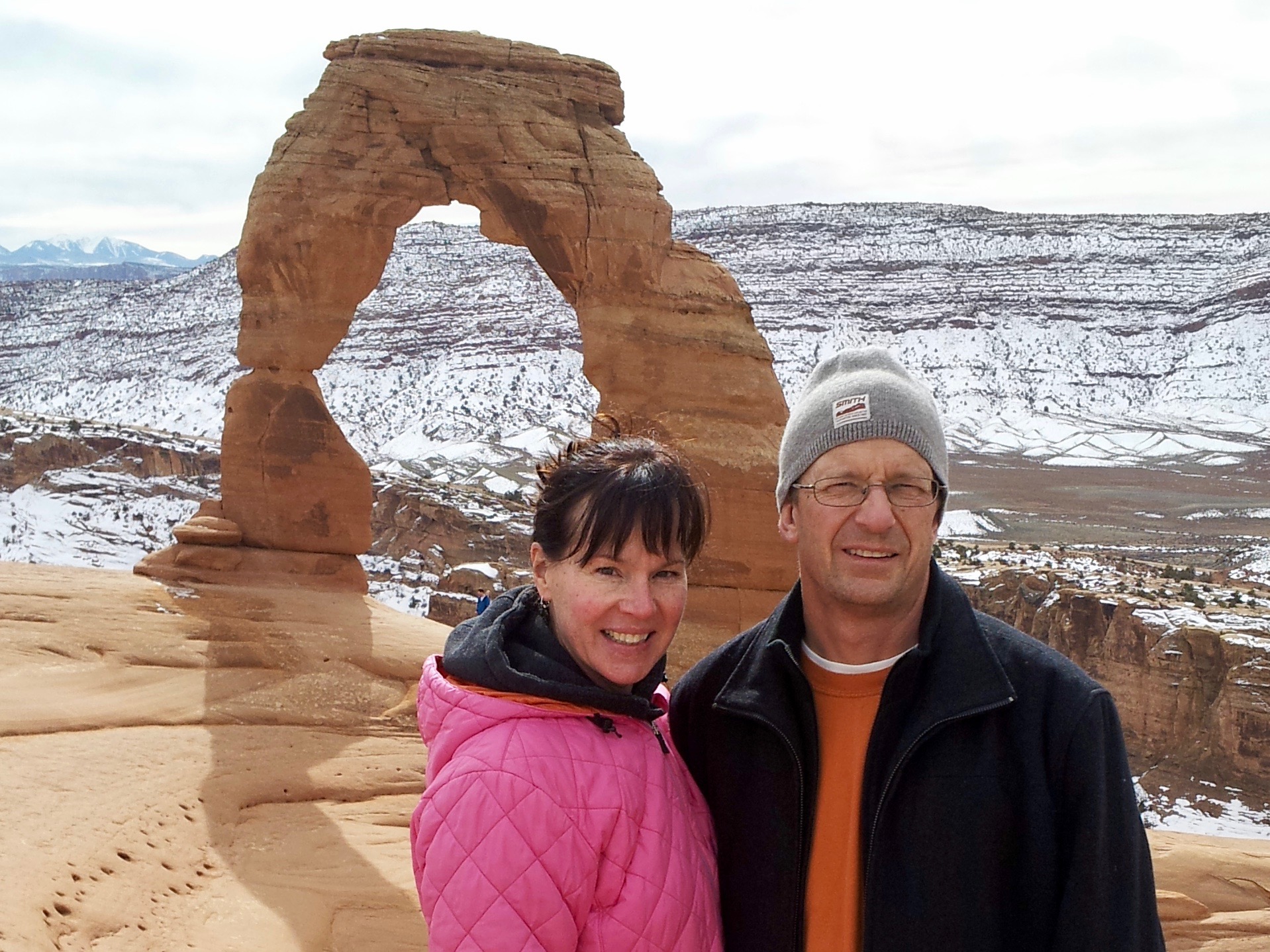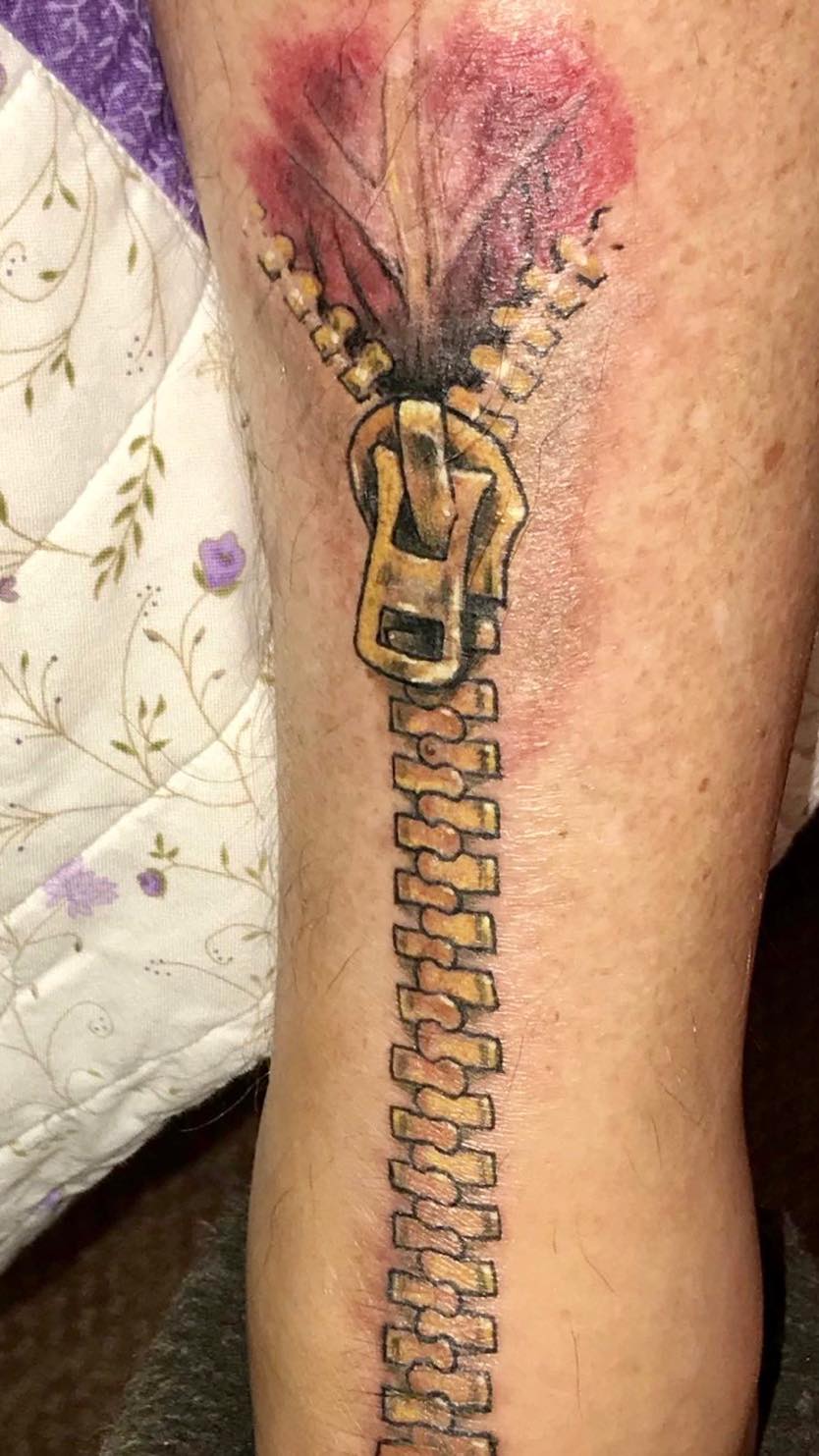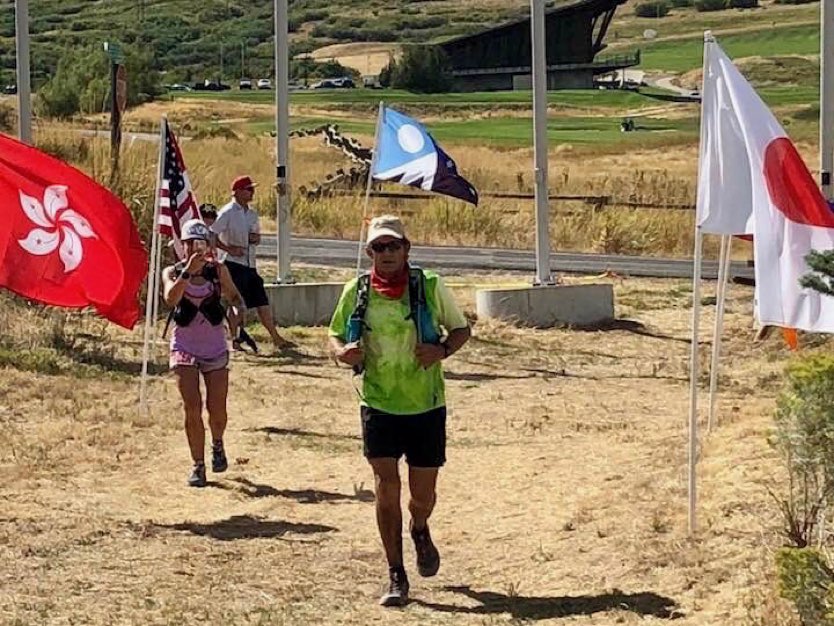Beneath an emerald canopy of pine and oak, Jim Skaggs, then 35 years old, corrals with 75 trail runners at the start of the Ouachita Trail 50 Mile in Pinnacle Mountain State Park near Little Rock, Arkansas. The out-and-back course skirts around the north side of Lake Maumelle and to the crown of Pinnacle Mountain at 1,013 feet above sea level. A half-day of adventure later, Jim returns to the finish with beaten-down, under-trained legs. One lone cowbell rings across the fairly empty forest floor, near an uncrowded food tent, as a volunteer’s stopwatch reflects the overall time of Jim’s first-ever ultramarathon. Another volunteer hands him an entry form for next year’s race, which he’d need to fill out by hand and send to the race organizer through the mail and with a check.
The 1993 ultrarunnning scene was even more inconspicuous than now. That laidback, underground vibe is what initially attracted and hooked Jim, who has since become one of the most successful and understated leaders in the trail community.
Over the past 25-plus years, Jim—now 60 years old—has continued to race and run ultra distances. But his greatest contributions are the countless trail running events that he has founded, adopted, and directed. His central mission? To help preserve the inclusive culture that welcomed him into trail running while introducing people to the incredible landscapes that they may otherwise never know exist.
“I’m always willing to be an enabler of helping others in their quest to join the dark side of running. We’re held together by our craziness,” Jim jests with me before diving into a list of the sport’s standout qualities: the ability of ultrarunners to support one another on and off the course, despite competition; and a general absence of social hierarchy based on athleticism.
“If I wanted to go hang out with the person who won the Boston Marathon, what are my chances of doing that as Joe average runner? Slim to none. You could do a [Buffalo Run Adventures] race—or any big-time ultrarunning event—and have a beer with Karl Meltzer at the finish. You can’t do that in big-time road running. There’s a real willingness in this tribe to support each other,” Jim says.
Pre-internet boom, Jim learned about the Ouachita Trail 50 Mile from the back pages of Runner’s World Magazine. He grew up swimming and started running a decade after high school, in 1987, as a way to maintain his health and stay in shape. After running a few road races, including the Boston Marathon, the Ouachita ultra spiked his curiosity in a new way: The off-road event had no website, published map, course elevation, or list of registered racers. Since then, Jim has run 80 ultras—including 30 100-mile finishes—and he’s also become the race director of many trail running and ultrarunning events.
“For the most part, ultrarunning has remained true to its roots of being low-key. Everybody helps everyone else, takes care of the environment, and has a good time. That’s how I like to [operate] my events,” says Jim, who started directing races in 2004, with the Rock Cut Hobo Run—which he founded.
“After I ran my first couple of ultras, I got a harebrained idea that I should put on an ultra at Rock Cut State Park, which is 3,000 acres with about 40 miles of trails,” says Jim, who used to live near Rockford, Illinois, where there were no nearby ultras. “I put together a committee of runner friends, and the park was receptive to the proposal. Close to 150 people raced that first year,” he recalls. It turns out, he has a knack for the role.
The following year, Jim and his family moved to Utah. Within a year, he got another itch to inaugurate a race. The idea surfaced during one of his volunteer shifts at Antelope Island State Park, located on an island in the middle of the Great Salt Lake accessed by a causeway, where he runs the trails (volunteers can also mountain bike or horseback ride) to assist visitors.
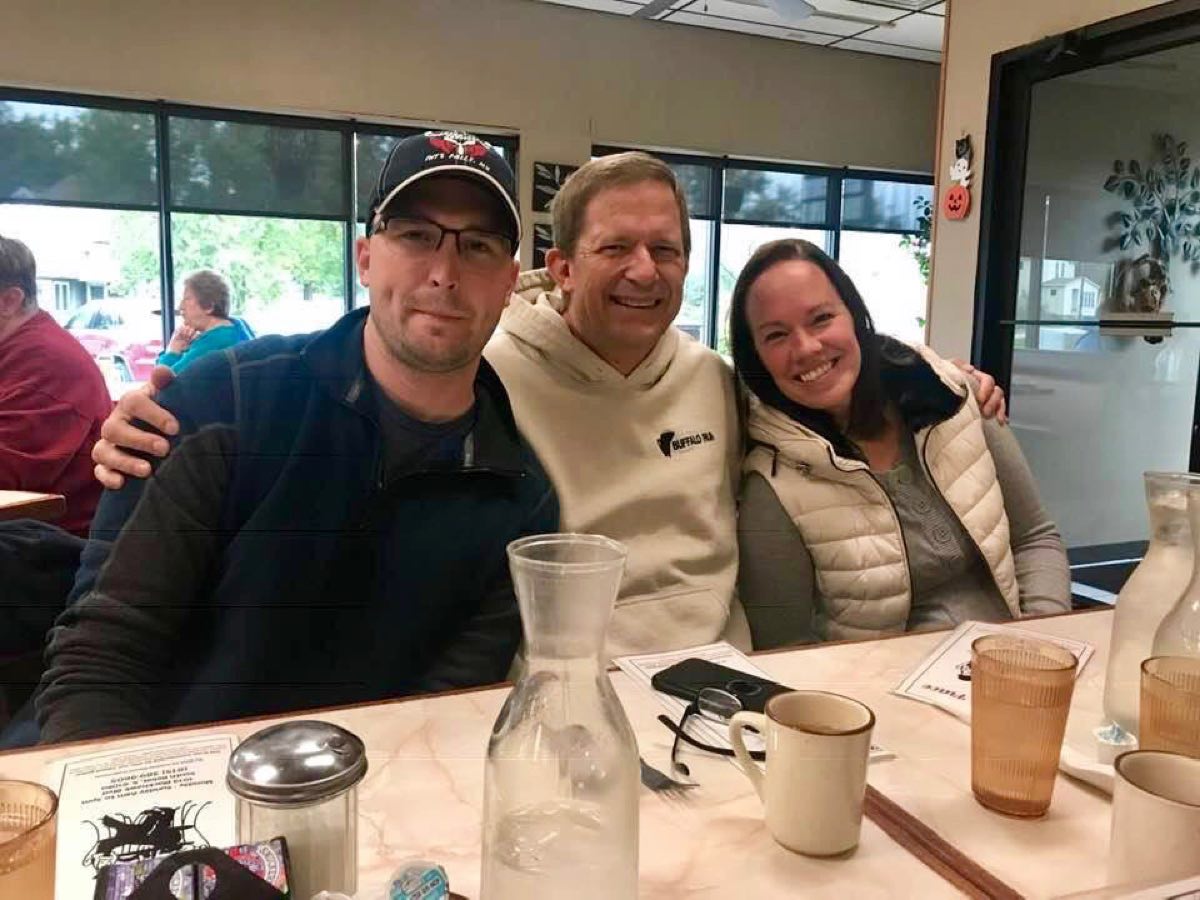
Jim and his two children, Kevin and Jessica, on Jim’s 60th birthday in 2018. All photos courtesy of Jim Skaggs unless otherwise noted.
“Antelope Island is one of the most unique, fascinating places I’ve ever been. There are 500 free-range bison roaming on the island, as well as deer and antelope,” says Jim. He describes the experiences of splitting 50-head herds on the trail and buffalo loping alongside him as he runs. Beyond the wildlife, the island’s isolated terrain creates a rare, solitary experience.
“On the island, I can sit on rock and hear nothing,” says Jim, who lives in Ogden and works as a full-time manufacturing engineer for JBT AeroTech. He uses a decibel app on his phone to measure noise pollution. A typical conversation is 65 decibels, whereas island sounds read 32 decibels. The lowest recording Jim has made was while camping in the Uinta Mountains of Utah: 28 decibels. “With all of the noise that’s associated with society, work, and living in town, getting away and not hearing anything is wonderful,” he says.
Compelled to share the island, Jim founded the Buffalo Run, which now spans over two weekends each spring and includes 25k, 50k, 50-mile, and 100-mile distances. Over the past 12 years, he has added the Antelope Island Fall Classic 50k and the Mountain View Half Marathon, and taken other races under his wing. He now directs the Harriman 25k and 50k Trail Run in Idaho and the Logan Peak 28-Mile Trail Race in Utah.
Jim’s events consistently sell out and for good reason.
“Jim’s race instructions are always humorous and good natured—and that’s just the person he is,” says Julie Pierce, one of the first runners Jim met when he moved to Utah. At the time, Pierce had her own USATF run club, so she helped Jim organize the debut race on Antelope Island. Julie launches into stories that reflect Jim’s generosity and warmth, like loaning Julie his race tent for her outdoor wedding and throwing annual holiday-cookie parties for everyone to bake and share treats. Jim and his wife, Karen, even coordinate a potluck stew for the long-distance Buffalo Run (the 50k, 50-mile, 100-mile event weekend.) Each racer is required to bring a can of veggies like corn, tomatoes, or green beans. Several hundred cans of ingredients are poured into 20-gallon stock pots with 80 pounds of bison that’s cooked and served to finishers.
“Jim makes everyone feel welcome. He’s down to earth, supportive, puts on training runs, and invites everyone. He encourages people to support the location of the event—like Antelope Island—through volunteer work. He also treats his own volunteers well and comps race entries for anyone willing to give a day of their time to help. And he does the same thing with all of the races that he’s picked up over the years,” Julie says.
Davy Crocket—long-time ultrarunner and more recently the founder of the Ultrarunning History podcast and blog—likewise met Jim shortly after he moved to Utah. The two became running buddies, and Jim invited Davy to join the Buffalo Run race committee.
“Over the years, I continued to help Jim with his race each year and felt like an apprentice in training. I watched him organize a quality ultra, which grew to be the largest ultra ever in Utah. Jim oozes of kindness toward his fellow runners, cares for all of the race details, and makes sure it’s a great experience for the runners. He taught me many things—including the fine art of stuffing friends’ goodie bags with sawdust and other items from around the house that you want to get rid of. Jim always wants to have fun,” says Davy, who was so inspired by Jim’s mentorship that he, too, became an ultramarathon race director.
Jim’s efforts to maintain the grassroots spirit of ultrarunning are complimented by an aim to progress equality. Last year, Jim increased the women’s prize purse at the Antelope Island Fall Classic 50k and Mountain View Trail Half Marathon. “The sport of ultrarunning promotes egalitarianism and equality, but it’s clear that in sponsorship, it’s anything but equal,” says Jim. The total bump-up amounted to $110 over six places, and it garnered more attention than Jim anticipated.
“Paying a little extra to the women brought awareness to the issue of wage disparity in this country,” says Jim. He thinks about his daughter and two granddaughters, and hopes that no woman is compensated less based off of gender.
On the horizon, as ultrarunning events continue to evolve, Jim acknowledges that there could be challenges for race directors regarding market saturation and trail management. All considering, ultrarunning races remain niche compared to events that are more accessible to the mass U.S. population.
“About 100,000 people will run an ultra this year, whereas 50,000 ran the New York Marathon. Another 30,000 people ran the Chicago Marathon. Another 25,000 ran the Boston Marathon…. When I first start running hundreds, there were 34 100-mile races nationwide. Now, there are still only 150 100-mile races out of 1,500 ultras in the country,” says Jim. Overall, the enjoyment, fun, and health benefits that people can derive from trail running outweigh Jim’s personal fears of trail impact, which can be mitigated by a well-managed race.
Outside of his RD positions, Jim has recently recovered from Achilles surgery to fix a large bone spur in his heel. He now runs pain-free and even finished the Wasatch Front 100 Mile in September. Ahead, he’s excited for a year of long-distance adventures around the world including runs in the Himalaya and Zion National Park: “I like having the ability to go for a run or hike and not worry about being physically limited. And running gives me the ability to go places that 99.99 percent of population will never go to,” he says. Jim’s impressive ability to cultivate huge social events with ease is balanced by his joy for self-time and solitude. We can all learn from someone who balances a paradox with humility and grace.
Call for Comments (from Meghan)
Calling all Jim Skaggs stories! Leave a comment to share a story about running or volunteering at one of the races he directs or of trail running and racing with him. Thanks!
